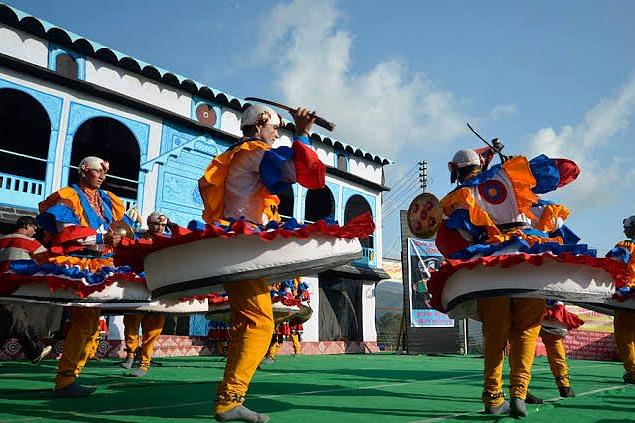Culture Of Uttarakhand
Uttarakhand has a 'Pahari' culture. Folk dance, music and festivals are a huge part of Uttarakhand culture. The land is blessed with the beauty of the Himalayas and ancient temples. The typical Hindu festivals such as Diwali, Holi and Navratri are celebrated here with much zeal.

Archaeological evidence supports the existence of humans in the region since prehistoric times. The region formed a part of the Uttarakuru Kingdom during the Vedic age of Ancient India. Among the first major dynasties of Kumaon were the Kunindas in the second century BCE who practised an early form of Shaivism. Ashokan edicts at Kalsi show the early presence of Buddhism in this region. During the medieval period, the region was consolidated under the Katyuri rulers of Kumaon also known as 'Kurmanchal Kingdom'. After the fall of Katyuris, the region was divided into the Kumaon Kingdom and the Garhwal Kingdom. In 1816, most of modern Uttarakhand was ceded to the British as part of the Treaty of Sugauli. Although the erstwhile hill kingdoms of Garhwal and Kumaon were traditional rivals, the proximity of different neighbouring ethnic groups and the inseparable and complementary nature of their geography, economy, culture, language, and traditions created strong bonds between the two regions, which further strengthened during the Uttarakhand movement for statehood in the 1990s. The natives of the state are generally called Uttarakhandi, or more specifically either Garhwali or Kumaoni by their region of origin. According to the 2011 Census of India, Uttarakhand has a population of 10,086,292, making it the 20th most populous state in India. However, the region was given the name Uttaranchal by the Bharatiya Janata Party led union government and Uttarakhand state government when they started a new round of state reorganisation in 1998. Chosen for its allegedly less separatist connotations, the name change generated enormous controversy among many activists for a separate state who saw it as a political act. Ancient rock paintings, rock shelters, paleolithic stone tools (hundreds of thousands of years old), and megaliths provide evidence that the mountains of the region have been inhabited since prehistoric times. There are also archaeological remains that show the existence of early Vedic (c. 1500 BCE) practices in the area. The Pauravas, Khasas, Kiratas, Nandas, Mauryas, Kushanas, Kunindas, Guptas, Karkotas, Palas, Gurjara-Pratiharas, Katyuris, Raikas, Chands, Parmars or Panwars, Mallas, Shahs and the British have ruled Uttarakhand in turns.